Kombucha Tea
Kombucha tea is a refreshing, bubbly fermented tea historically from China, Russia & Germany (Greewalt et al, 2000). It is made from a Kombucha S.C.O.B.Y. /scoby. Scoby stands for symbiotic culture of bacteria and yeast. It is also known as a ‘mushroom’ or ‘biofilm’. Kombucha tea is fermented which means that bacteria and yeast which are apart of the scoby, eat up the sugar to produce alcohol and carbon dioxide (which makes it bubbly). For those with a healthy metabolism who choose to drink Kombucha, it is generally considered safe (Mayser, 1995).
Kombucha is known to contain a spectrum of bacteria and yeast:
Bacteria:
The bacteria in kombucha are acetic acid bacteria. They are:
- Gluconacetobacter sp. A4 (G. sp. A4) (Yang, 2010)
- Acetobacter, including Acetobacter xylinum (Mayser, 1995)
Yeast:
Kombucha fermentation is initiated by osmotolerant species and succeeded and dominated by acid-tolerant species (Teol & Cox, 2004).
It contains:
- Brettanomyces bruxellensis (Teol & Cox, 2004)
- Candida stellata (Teol & Cox, 2004)
- Schizosaccharomyces pombe (Teol & Cox, 2004)
- Torulaspora delbrueckii (Teol & Cox, 2004)
- Zygosaccharomyces bailii (Teol & Cox, 2004)
- Yeasts of the genera Brettanomyces (56%), Zygosaccharomyces (29%) and Saccharomyces (26%) (Mayser, 1995)
- Saccharomycodes ludwigii and Candida kefyr (in isolated cases) (Mayser, 1995)
- Pellicle-forming yeasts such as Candida krusei or Issatchenkia orientalis/occidentalis (Mayser, 1995)
- Species of the apiculatus yeasts (Kloeckera, Hanseniaspora) (Mayser, 1995)
As well as bacteria and yeasts it “contains various acids including including acetic acid, gluconic acid and lactic acid, as well as some antibiotic substances” (Mayser, 1995).
Though the verdict is not yet out on the complete benefits of drinking Kombucha, I’m sure there are many people out there who can offer anecdotal evidence for the health benefits of the drink.
Studies on kombucha tea:
- Kombucha has been shown to have in vitro antimicrobial activity and enhances sleep and pain thresholds in rats (Greewalt et al, 2000).
- In rats, Kombucha may have hepatoprotective and curative properties against CCl4-induced hepatotoxicity. (Murugesan, 2009).
- Kombucha may have antiproliferative and antimicrobial activity (Cetojevic-Simin, 2008).
- The low rate of contamination might be explained by protective mechanisms, such as formation of organic acids and antibiotic substances (Mayser, 1995).
- It has high levels of B vitamins (Gamundi & Valdivia, 1995).
- In rats, a study has shown that it has no effect of toxicity, it was shown to prevent lipid peroxidation and prevents a fall in reduced glutathione level when the rats were exposed to cold and hypoxia in a simulated chamber. It has also been found to decrease paracetamol induced hepatotoxicity significantly. The study shows that K-tea has anti-stress and hepato-protective activities (Pauline & Dipti, 2001).
How To Prepare Kombucha Tea
You will need:
- kombucha scoby
- 1-2 C. kombucha starter liquid from a previous batch of kombucha (if you are buying a scoby from someone else ask that they please include some starter liquid if they haven’t already)
- tea (green or black) (either in bags or loose leaf)
- 2 litres (8 cups) filtered water
- 1 cup white sugar (this is one case where white sugar is okay, because it feeds the kombucha mushroom)
- wide glass jar
- a jug
Please sterilize your glass jars, jugs and utensils before using in order to reduce chances of contamination.
First step: you need to get a kombucha scoby! As you can see the kombucha mushroomlooks like a flat pancake, though this flat pancake is not passive at all- it is alive!
Where to get a kombucha s.c.o.b.y.? For those in Australia, I got my scoby from Anita Geradi (you can contact her here: gamgo at optusnet.com.au (just remove the spaces and replace ‘at’ with @). Here is a site that lists a whole lot of sources for you to obtain a Kombucha baby.
A kombucha scoby.
Depending on where and who you get kombucha from, your kombucha (most likely) will be sent in some kombucha starter liquid which is great because that liquid helps to start the process of fermentation.
Kombucha grows a new layer ever time you make the tea and forms the shape of the rim of jar.
Second step: Choose what kind of tea you would like to use.
Generally the type of tea used to make kombucha is black or green tea (such as oolong tea). The tea needs to contain caffeine and tannins. You want to avoid any kind of herbal teas. The oils in herbal teas are said disrupt the kombucha mushroom.
Step three: Make the tea.
This is easy enough- just boil water and make tea (sans milk). Make enough to fit in your jar and leave to infuse with the tea bags or the loose leaf tea. Add the sugar to dissolve. Leave the tea somewhere long enough for the tea to cool down to room temperature.
You won’t use the kombucha mushroom at this point, so keep it away from the hot tea for the time being.
Step four: Add the kombucha starter
Once your tea has infused, the sugar has dissolved and the tea has now cooled down (very important!), it’s now time to take out the tea bags (or strain out the tea leaves). So now you have your sweetened, infused tea in the jar. It’s time to put the kombucha mushroom & the starter liquid in the tea. Cover the jar with a cloth and a rubber band and place the kombucha in a safe dark place (like in the back of a cupboard or on a shelf) where it can stay undisturbed (away from light, bugs & movement) for 1-3 weeks to ferment.
Step five: leave to ferment
Leave this to ferment for 1-3 weeks. The longer it ferments the more acidic and vinegary it gets and the less sugar that is left.
Step six: drink!
Take out the kombucha mushroom, reserve a bit of the fermented tea for the next batch & decant the kombucha tea liquid to drink.
Freshly fermented Kombucha & the Kombucha mushroom.
A fresh batch of Kombucha ready to be poured into a jar to be chilled. A bit of the Kombucha liquid has been poured out for the next batch.
You can add the kombucha tea liquid to a jar with a lid (as below) to increase the carbonation of the final product and/or just to put it in a container to chill in the fridge.
The bottle contains bubbly fermented Kombucha tea and the jar has a bit of starter liquid for the next batch.
Bubbly fermented tea!
Kombucha is best served chilled.
Caution:
- Kombucha does have a slight alcohol content (can be up to 3-5% depending on batch) so those who are sensitive to alcohol or who are recovering from alcohol addiction may wish to avoid kombucha all-together. Kombucha may be associated with liver function disorders.
- Kombucha can grow mould. If your kombucha mushroom has grown mould throw away the liquid and the kombucha mushroom.
- The mould in kombucha may grown aspergillus, which is a fungal infection which may be fatal to those who have been diagnosed as HIV-positive (Gamundi & Valdivia, 1995)
- It’s best to use glass only as your fermentation vessel. Ceramic containers are NOT okay as they have been associated with lead poisoning.
- Those suffering from immunosuppression should preferably consume controlled commercial Kombucha beverages (Mayser, 1995).
Resources:
Kombucha Tea- Food Standards Australia & New Zealand
Kombucha: A Systematic Review of the Clinical Evidence
Dom’s Kombucha & Vinegar Making In-Site
References:
- Cetojevic-Simin DD, Bogdanovic GM, Cvetkovic DD, Velicanski AS., 2008, ‘Antiproliferative and antimicrobial activity of traditional Kombucha and Satureja montana L. Kombucha‘, Official Journal of Balkan Union of Oncology, http://www.ncbi.nlm.nih.gov/pubmed/18979556, 13(3) pp. 395-401, viewed 8/2/2011
- Gamundi R, Valdivia M., 1995, ‘Kombucha mushroom: two different opinions’, Sidahora. Oct-Nov 34-5., http://www.ncbi.nlm.nih.gov/pubmed/11363369, viewed 8/2/2011
- Greewalt CJ, Steinkraus KH, Ledford RA, 2000, ‘Kombucha, the fermented tea: microbiology, composition and claimed health effects’, Journal of Food Protection, 63(7) pp 976-81, http://www.ncbi.nlm.nih.gov/pubmed/10914673, viewed 8/2/2011
- Mayser P, Fromme S, Leitzmann C, Gründer K., 1995, ‘The yeast spectrum of the ‘tea fungus kombucha”, Mycoses, 38(7-8) pp.289-95, http://www.ncbi.nlm.nih.gov/pubmed/8559192, viewed 8/2/2011
- Murugesan, G. S., Sathishkumar M, Jayabalan R., Binupriya3 A. R., Swaminathan K., and Yun S. E., 2009, ‘Hepatoprotective and curative properties of kombucha tea against carbon tetrachloride-induced toxicity’, Journal of Microbiology and Biotechnology, 19(4) pp. 397-402, http://www.jmb.or.kr/journal/viewJournal.html?year=2009&vol=19&num=4&page=397, viewed 8/2/2011
- Pauline T, Dipti P, Anju B, Kavimani S, et al, 2001, ‘Studies on toxicity, anti-stress and hepato-protective properties of Kombucha tea’, Biomedical and Environmental Sciences, 14(3) pp.207-12, http://www.ncbi.nlm.nih.gov/pubmed/11723720, viewed 8/2/2011
- Teol Al, Heard G, Cox J, 2004, ‘Yeast ecology of Kombucha fermentation’, International Journal of Food Microbiology, 1;95(2): pp 119-26, http://www.ncbi.nlm.nih.gov/pubmed/15282124, viewed 8/2/2011
- Yang Z, Zhou F, Ji B, Li B, Luo Y, Yang L, Li T, 2010, ‘Symbiosis between microorganisms from kombucha and kefir: Potential significance to the enhancement of kombucha function‘, Applied Biochemistry and Biotechnology, 160(2) pp 446-55, http://www.ncbi.nlm.nih.gov/pubmed/18810658,viewed 8/2/2011
© Copyright: All text and pictures are copyright of Michelle Robson 2011, unless where noted.

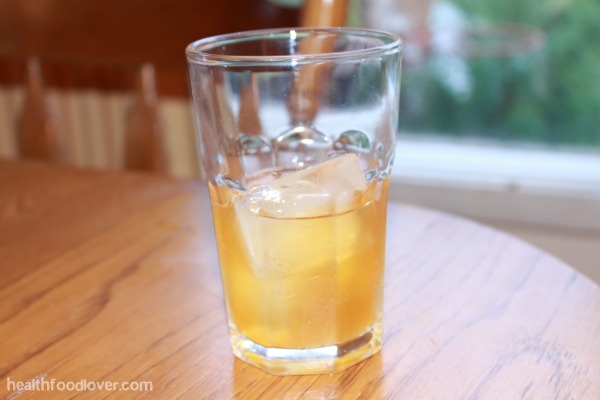
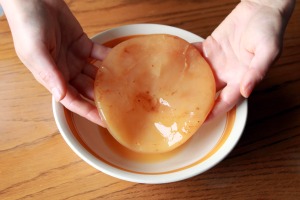

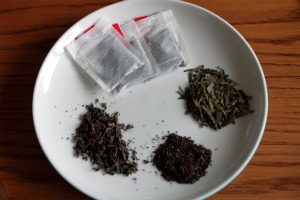

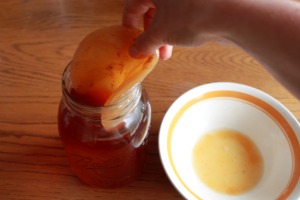
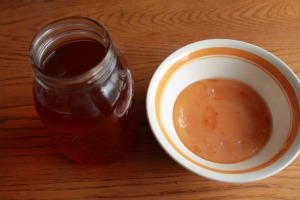
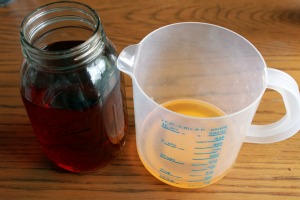
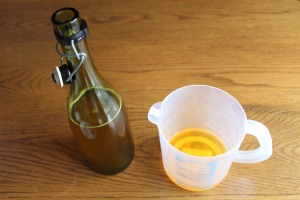
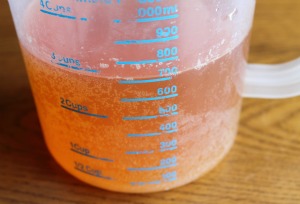

















{ 23 comments… read them below or add one }
RT @LoverHealthFood: [New Post] Fermented Foods: How To Prepare Kombucha Tea – via @loverhealthfood http://healthfoodlover.com/hfl/2011/02/p…
RT @LoverHealthFood: New Blog Post: Fermented Foods: How To Prepare Kombucha Tea – Kombucha Tea Kombucha tea is a refreshing, bubbly fer …
This looks awesome! Knowing me I would cultivate the life-threatening mould…but I want to try it all the same!
Definitely try it! It’s freaky-looking but fun!
And don’t worry too much about the mould, if you sanitize everything it should be alright.
Hi there,
Great to read this! I’m loving my Kombucha, too!
I’ve got some good healthy cultures, if anyone wants one.
Anita
x
I would love one! As I research making my own Kombucha, the question that keeps entering my head is how do I know for sure that I have a good starter? or I guess it’s called scoby. thanks for offering. Can you mail it?
Hi Anita, just got into hearing about Kombuchu tea and came across this site with your offer of good healthy cultures. Not sure where in meoburne you are located but would love to get a hold of one of your cultures if that’s possible. thanks for the offer, I hope I can do the same for others one day. Jenny
Hi Jenny,
I’m actually having a little break from Kombucha till Spring, so I haven’t got a viable culture for you at the moment. You can contact this lady for a culture.
margblack (AT) optusnet.com.au
Thanks for the Kombucha Tea recipe. This is really good for Australia’s weather. I recently found another recipe for a tea that I think maybe you might want to try too, it’s called the Peach Iced Tea http://bit.ly/g5bEdh
Thanks for this lovely step by step how to make it. Kombucha is very delish and homemade soooo much better for you than the ready make kind you can get in health food shops. I was into Kefir for quite a while, but got a bit slack with making it. I should start again, fermented foods are so beneficial.
Hi Chele! I am actually drinking Kombucha right now! I have been making about 2 gallons a week for years and I give it to my husband in the morning before he leaves for work. It is sooo good for you and I love the flavor! Your directions and information are spot on! Hope all is well with you little lady! Tons of love! Alex
Thanks for the good infos Michelle.If I want to courier the scooby starter to my friends which about 3 days travel periods , can I just send him the kombucha liquid instead? Is it any chances to grow it just by using the liquid?Thank you in advances : )
Hi Equin.
You possibly could, but it is more definite that the scoby will grow if they have the scoby. The scoby should be fine for three days if you send it well.
I love kombucha! I have added raspberries to it in the past and it is so delicious!
I have one question though, I haven’t used my scoby in a long time to make kombucha- do you think that I will need a new one or do they last a while as long as they are in starter liquid? Thanks for any info. you have! :)
Hi Michelle,
It will be alright, as long as it’s been kept in the aged Kombucha liquid. (Some keep their spare cultures in a ‘kombucha hotel’- see Ed Caspers pics on the net.) A good way to tell if your culture is still viable is if it still grows another baby, or thickens up the culture on the top.
As long as you keep 20% of that aged K-liquid for the next brew, you’ll be fine.
Raspberries sounds cool:)
Anita
x
Fantastic! This will beat the astronomical price of just one jar of it at the health food store:) Thanks for the great recipe!!
How much do you drink a day?
Hi Margaret. Depends what I feel like. Maybe half a cup, maybe none at all! With kombucha it’s important to listen to your body. When you start drinking it, start slowly with a small amount at first to build up your tolerance to it. And don’t drink it if it doesn’t make you feel good.
Wow, coool!! I’ve been looking to add some more fermented goodness to my diet, might have to give this a go :)
Yeah definitely! It’s really fun to experiment with it!
Seem a nice tea… I may try this one!
I am living in Uyo, Nigeria. Iam interested in brewing Kombucha. I want to know how to get it posted to me in Nigeria
{ 1 trackback }